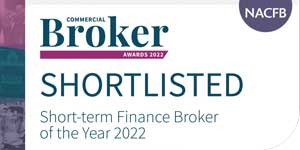With the prospect of earning steady rental income and enjoying personal use of your property, it's no surprise that many individuals are considering purchasing a holiday let. However, before you start looking for properties and tenants, it's important to secure the right finance. In this article, we'll explore the ins and outs of holiday let mortgages and provide tips for finding the right lender to finance your property.
Understanding Holiday Let Mortgages
First, let's define what a holiday let mortgage is and how it differs from a traditional residential mortgage. In essence, a holiday let mortgage is a type of finance designed specifically for those who plan to rent out their property as a holiday home. As such, it tends to have different requirements and loan terms than a standard mortgage.
One of the main benefits of a holiday let is that it can provide a reliable source of income through rental payments, at a time when the buy-to-let landlords are being subject to stringent regulation.
How do Holiday Let Mortgages Differ from Traditional Mortgages?
There are several key differences between holiday let mortgages and traditional residential mortgages. For one, lenders typically require a higher deposit on a holiday let property, often around 25% to 40% of the purchase price. This is because holiday-let properties are considered higher-risk investments due to their seasonal nature and reliance on tourism.
Another key difference is that lenders look at the rental income potential of the property when assessing your eligibility for a loan, as opposed to your income. In some cases, they may require that the property is already generating rental income, while in others, they will base your eligibility on the projected income potential.
It's also worth noting that holiday let mortgages may come with higher interest rates and fees than traditional mortgages. This is because lenders are taking on more risk by financing a property that is primarily used for short-term rentals.
How Much Can I Borrow Against a Holiday Let?
As with any mortgage, how much you can borrow will depend on your financial situation, deposit size, credit history, and the property you want to purchase. The maximum loan available to you for a holiday let mortgage is based on the rental income you can expect to earn from the propert. Generally, lenders require that the rental income covers at least 125% of the mortgage repayments; in some cases, this can be as high as 145%.
It's important to note that the amount you can borrow against a holiday let will also depend on the location and type of property. For example, a holiday let in a popular tourist destination may be more attractive to lenders than a property in a less desirable location. Similarly, a property that is well-maintained and has modern amenities may be more appealing than an older property that requires significant renovations.
Another factor that can impact how much you can borrow is your own financial situation. Lenders will typically assess your income, expenses, and credit history to determine your borrowing capacity. If you have a stable income and good credit score, you may be able to borrow more than someone with a less stable financial situation.
Finally, the maximum loan you can get will be impacted by how much deposit you have available. Lenders typically go up to 75% LTV, which means you’ll need to put 25% of the funds in yourself. If you have £50k, this means you’ll be able to borrow up to £200k.
It's also worth noting that some lenders may offer more flexible lending criteria for holiday let mortgages. For example, they may be willing to consider rental income from other properties you own, or they may consider personal income – this is referred to as top-slicing.
How much deposit do you need for a holiday let?
If you're considering buying a holiday let, one of the most important things to consider is how much deposit you'll need. The size of your deposit you have will directly impact the amount you are able to borrow.
Typically, you should expect to contribute at least 25% of the property's value as a deposit. This means that if the holiday home costs £200,000, you'll need to have a deposit of at least £50,000. However, some lenders may require a higher deposit, so it's important to work with a broker who can advise you on the best route to take.
It's worth noting that the more substantial your deposit, the better the mortgage terms you're likely to receive. This is because a larger deposit reduces the lender's risk, making you a more attractive borrower. As a result, you can access the best holiday let mortgage rates, which could save you thousands of pounds over the life of your mortgage.
When calculating how much deposit you'll need, it's important to factor in other costs associated with buying a holiday home. These may include legal fees, stamp duty, and survey costs. You should also consider ongoing costs such as maintenance and insurance.







